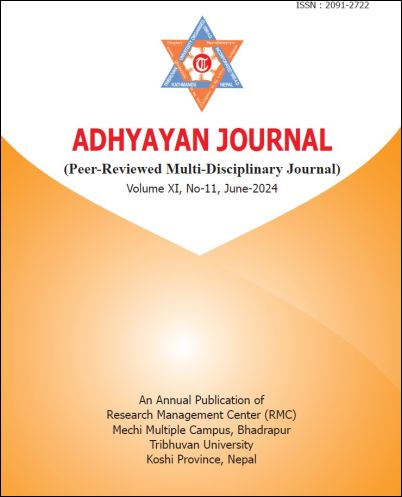Relationship Between Fine Root Biomass and Soil Physico-chemical Properties of Grassland Ecosystem in Bhadrapur Municipality of Jhapa district, Eastern Nepal
DOI:
https://doi.org/10.3126/aj.v11i11.67081Keywords:
Fine root biomass, soil properties, grassland ecosystem, root growth dynamicsAbstract
This study investigated the distribution of fine root biomass and various soil properties in a grassland ecosystem within Bhadrapur Municipality, Nepal. Soil samples were systematically collected from randomly selected blocks in undisturbed, disturbed, and roadside areas during the late rainy season. Analyses included soil texture, moisture content, temperature, pH, and quantification of fine root biomass (FRB; <5 mm diameter) within the top 15 cm soil depth. Results showed the mean FRB was significantly higher in undisturbed areas (7.77 t/ha) compared to disturbed (7.053 t/ha) and roadside (1.76 t/ha) areas. Across all sites, FRB exhibited a positive correlation with soil moisture content. Soil pH was slightly more acidic in undisturbed versus disturbed and roadside areas. Soil temperature demonstrated a positive correlation with FRB in undisturbed and roadside areas but a negative correlation in disturbed areas. Additionally, FRB negatively correlated with sand content in disturbed and roadside areas. The findings highlight how soil moisture is a key driver of fine root proliferation in this grassland ecosystem. Variations in soil texture, pH, and temperature between sites reveal their influence on root growth dynamics. Understanding these root-soil interactions has implications for sustainable grassland management, biodiversity conservation, and ecosystem resilience under changing environmental conditions.




